Blue Monday: Adventures in Indigo
The posts on this blog are searchable by sense–sight, scent, touch, taste, sound and “more” (for all those senses that don’t quite fit into the traditional categories). So far I’ve stuck mostly to scent and taste. Today’s post is (mostly) for the eye. Last weekend I attended a workshop on traditional Japanese Shibori dyeing techniques using natural indigo dye taught by textile artist and quilter Maura Ambrose as part of the excellent new Feliz Sale.
I don’t know how to sew (yet!). Nonetheless, I own a small pile of fabric that I intend to use for…something…someday. Textiles are just one of the best, most affordable ways I know to feast on color and pattern.
I met Maura through the amazing designer and leather worker Natalie Davis (that night is a whole other story). I soon became a huge fan of Maura’s Folk Fibers twitter feed where she details the slow, fascinating process of growing, harvesting, and/or gleaning the plant materials–from indigo and sunflowers to prickly pear fruit–she uses to create her own natural dyes.1 She’s looking for some Osage orange tree wood right now, in case anyone out there is pruning.
Maura invited me to attend her workshop because she was curious about how I would describe the smell of natural indigo. “It’s stinky,” she warned. She was not lying. The workshop took place on the grounds of a community center just outside the public restrooms, and it took me awhile to understand that the ripe, sweaty outhouse scent suffusing the air was coming from the giant pot of dye, not a backed up toilet. It is not an overwhelmingly pungent scent (unless, like Maura was that morning, you are driving a 20 gallon pot of it in your car) but it makes itself known. After indigo-dyed cloth has air-dried for some hours, it smells exactly–but exactly–like wet dog. When it is completely dry almost all of the ripe funky notes are gone and what’s left has a sweet earthiness, like dry grasses wet from recent rain growing in manure enriched soil. (And post-washing, it is scent free.) But we’re not talking about smells here. We’re talking about color.
Color and pattern.
All of the patterns featured above were created using various resist techniques–folds, clamps, rubber bands and twine create areas that resist soaking up the dye and result in a white and blue pattern. My favorite pattern of the afternoon was one of the simplest. A simple fan, or accordion-style fold, clamped together with clothespins that, when unfolded, reminds me of a city skyscraper lit up at night. (Assuming the power is on. New York has been much on my mind of late.)
Indigo dye must oxidize to achieve its true color. When the fabric is first unfolded it is a gorgeous blue-green. Within five minutes or so it turns turquoise, and then a true indigo blue.
Depending on the amount of folding, wrapping and clamping, the time spent in the dye bath, and the nature of the fabric itself, the color can vary quite a bit. One of the most elaborate patterns attempted in the workshop was a special technique called arashi, in which the fabric (the participant used a piece of chiffon) is placed around a form, such as a stick, and then wrapped (and wrapped and wrapped and wrapped) with twine.
The results, a shifting tracery perfectly suited to the floating transparency of the chiffon, were worth the work.
By the end of the workshop I was in love with indigo blue in all its permutations, from pale denim to deep starry night. I find myself reaching for the neglected navy items in my closet. I keep seeing it all around me, the way I keep hearing the newest word I’ve learned. My thanks to Maura for inviting me. I may not take up sewing or dyeing anytime soon, but I’m glad to have head full of blue to call upon whenever I need it.
1I will have more to say in future posts about Maura, Natalie and some of the other women I keep meeting who are calmly, efficiently making their (supposedly) impractical, impossible dreams come true.
Images: All photos by me, taken with my phone. Feel free to share, but please credit and link.

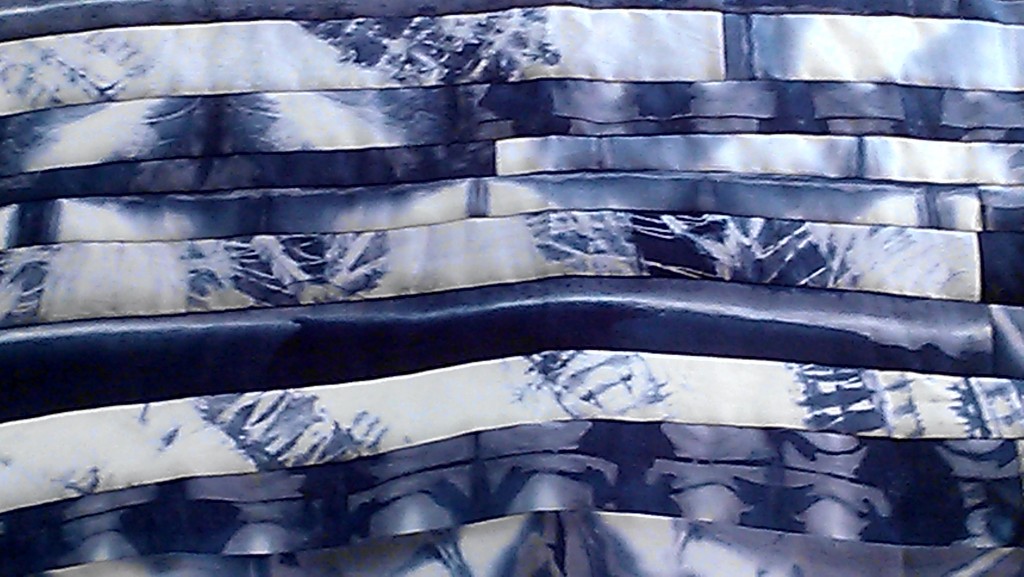
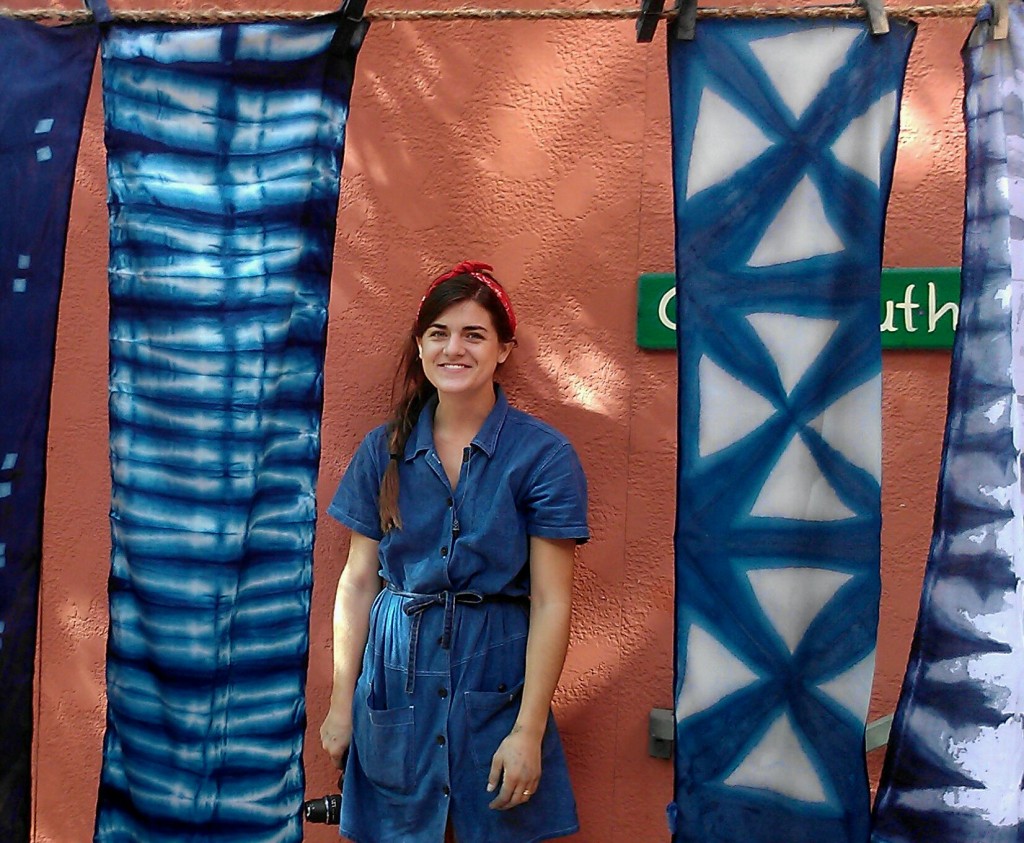
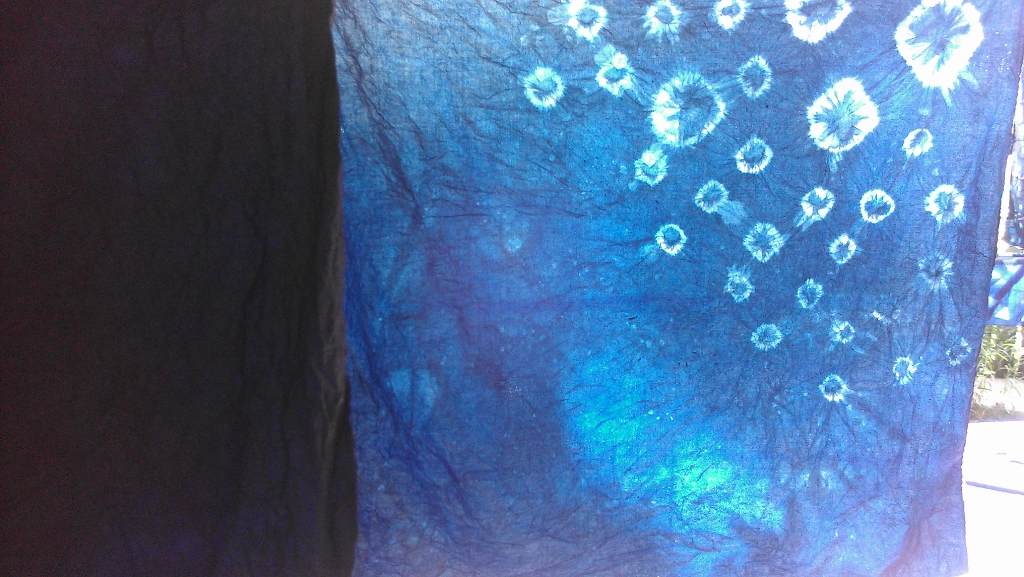
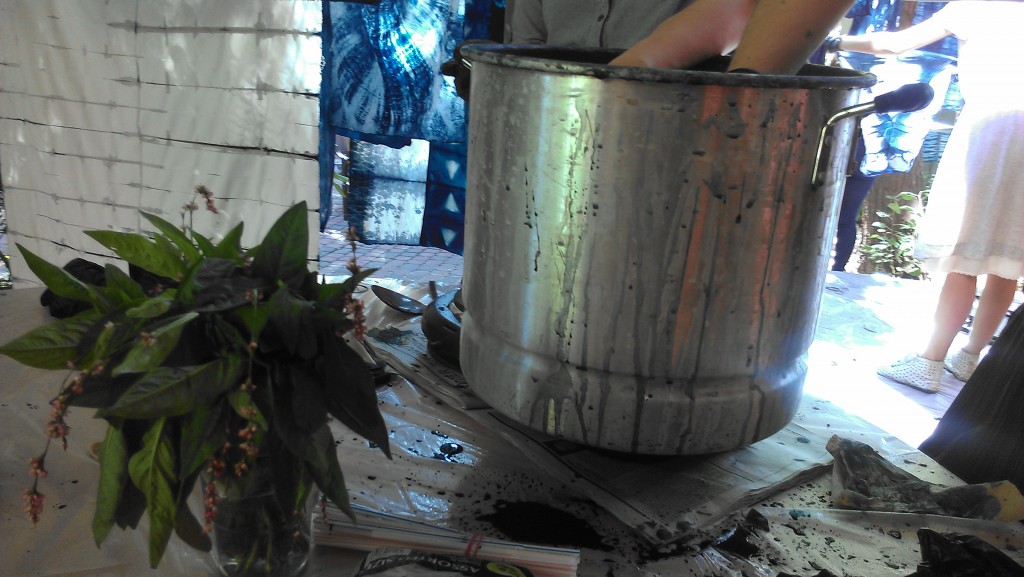
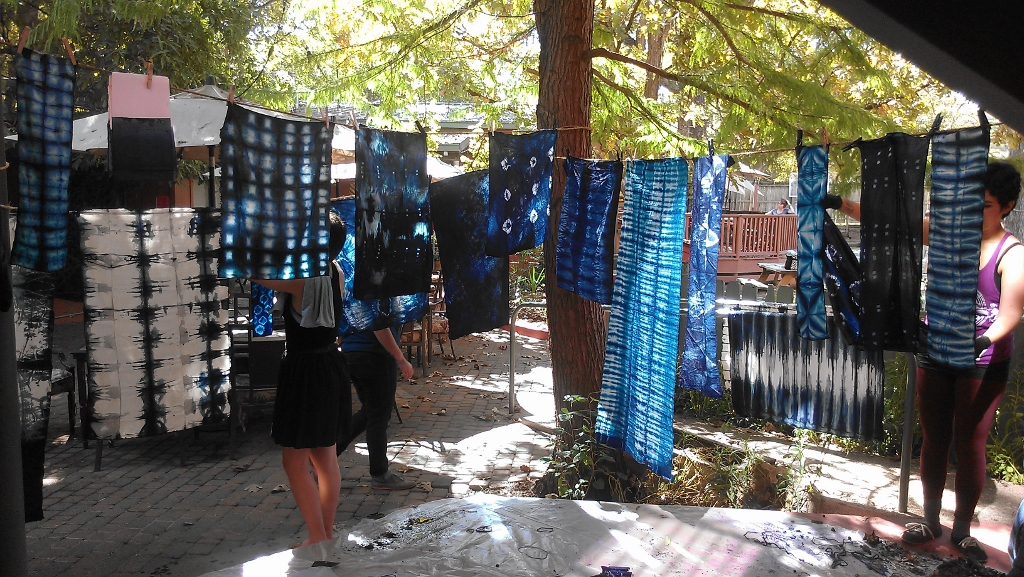
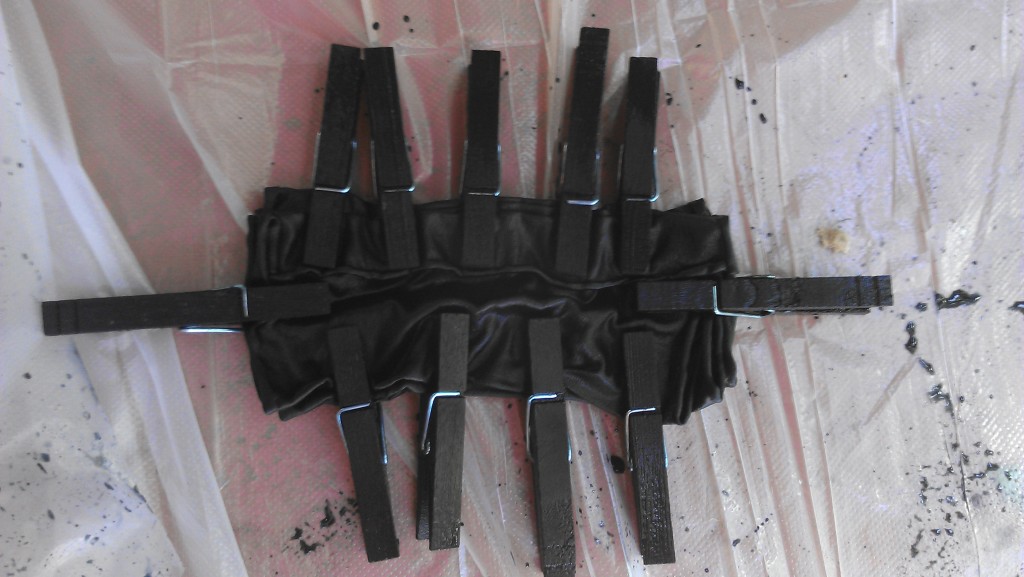
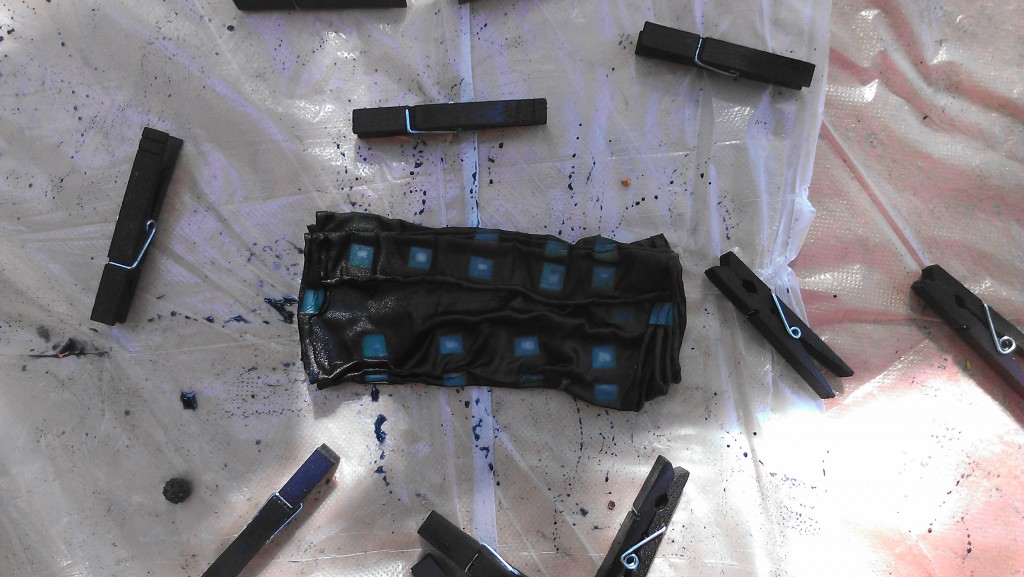
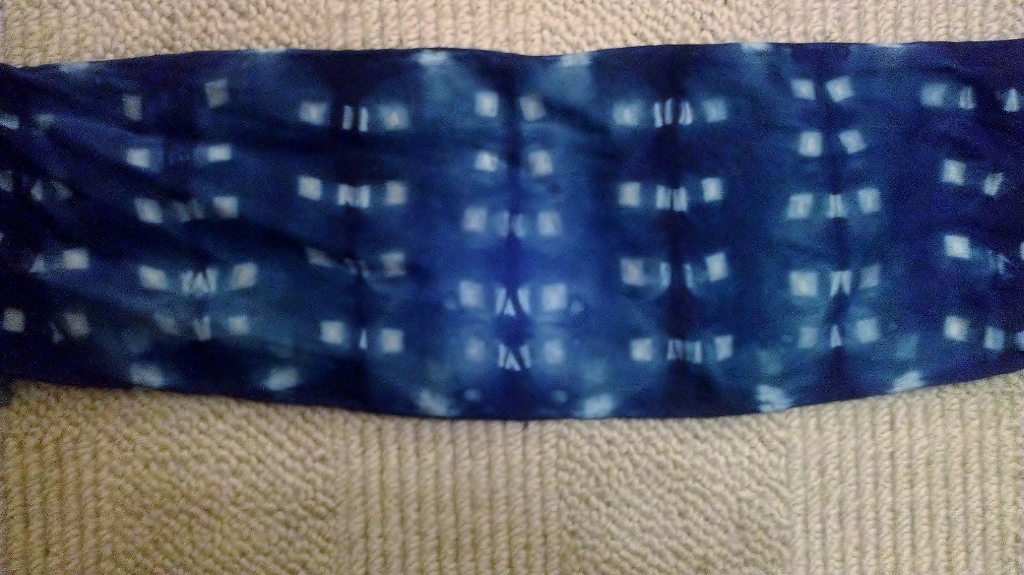

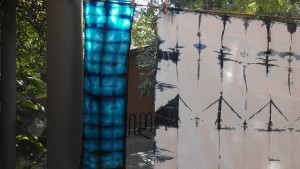
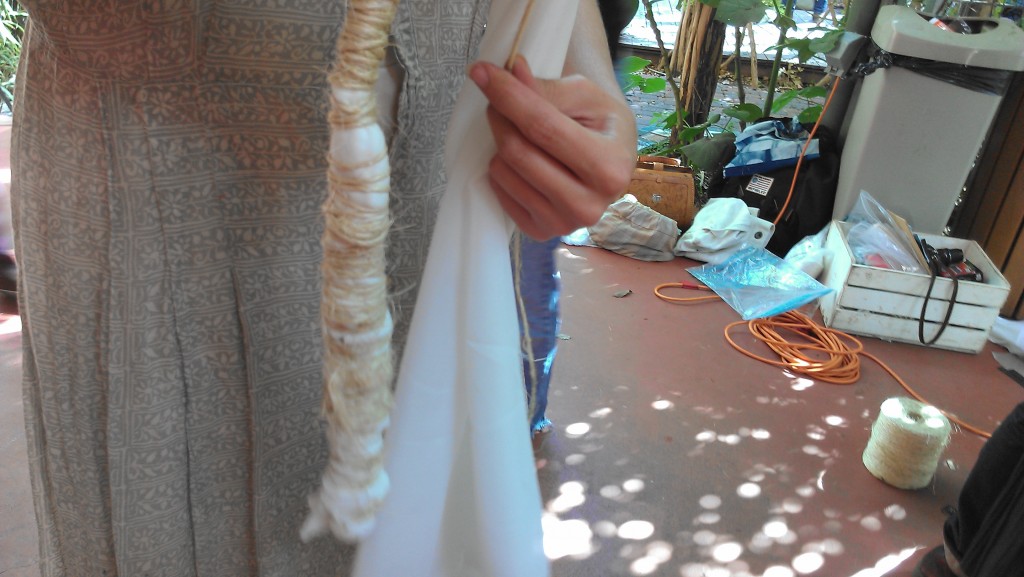



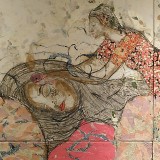
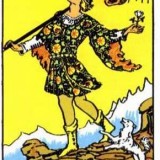
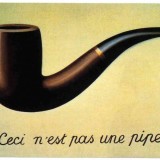


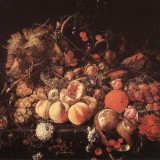

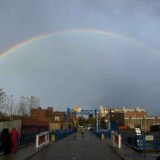
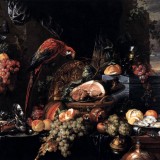


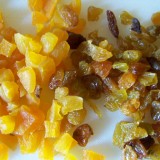
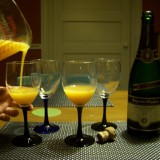
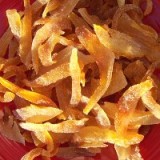
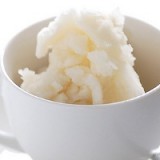
11/14/2012 at 9:50 pm
How beautiful! And I’m sure they were even more gorgeous in person. You’re so lucky to have had a chance to experience this!
11/15/2012 at 4:51 pm
It was wonderful to be surrounded by so much blue. There was something very rich and serene about it. And the women who (it was all women) who attended the workshop were wonderful to watch. They were very sure of themselves, methodical and creative at the same time. I used to dream about being surrounded by artists and I have to say I am slowly getting there!
11/20/2012 at 10:26 am
That indigo color is amazing! I love how simplistic the dying techniques seem and they end up so intricate.
11/20/2012 at 12:03 pm
Yes, that’s one of my favorite things, too. There are many subtle adjustments one can make within the simple framework to change the color or size of the pattern. It’s easy to imagine how someone could spend a lifetime perfecting the craft.
01/06/2015 at 11:42 pm
For the pole-wrapped chiffon, how did you immerse the whole thing into a dye pot? Thanks!